Francois de Chazal, the Sugar Estate owner and Renaissance Man in Mauritius. Or is it Francois the Tenth Degree Rosicrucian, alchemist who discovered the Philosophers Stone?
Francois de Chazal settles in Mauritius with his brother Antoine ‘Regis’ Chamarel and he establishes Belle Montagne in the area of Notre Dame in 1763. If Antoine ‘Regis’ de Chazal is ringing any bells, you are quite correct.
It was not my intention to be writing again of this family, but here they are in Notre Dame.
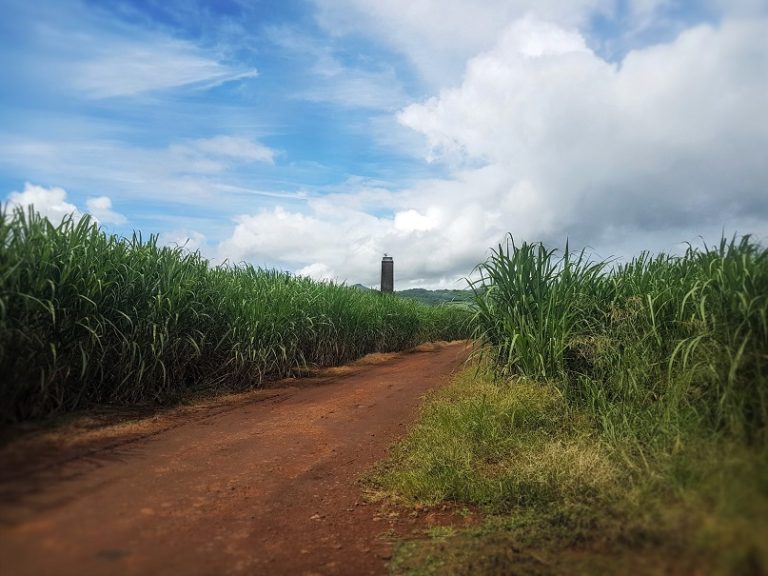
Antoine ‘Regis’ de Chazal also know as Chamarel , it so turns out, is the grandfather of Edmond (from St Antoine Goodlands). Read more about him here, if you missed the St Antoine blog. Francois and Chamarel’s father is Lord of La Villeneuve, but he never comes to Mauritius so we will have to pick up his story when we visit France someday.
Sadly Chamarel dies at age 46, when his son “Toussaint” Antoine de Chazal de Chamarel is only 2 years old. “Touissaint”, meaning All Saints, is the father of Edmond from St Antoine. He too dies quite tragically on Christmas day at the age of 52 of opium poisoning. He was at Governor Robert Farquhar’s house at the time, Chateau du Reduit.
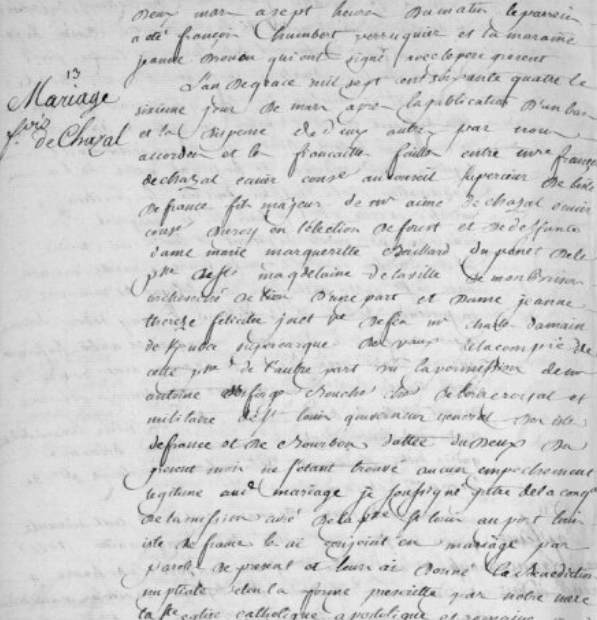
Returning, however, to brother Francois who established the sugar estate at Notre Dame, he gets married in 1764.
Remarkably, through the fires and cyclones that ravaged Mauritius, the original marriage record remains.
Francois and his wife do not have any children but they do adopt the 2 boys from his brother Chamarel when he dies. Interestingly, Chamarel was married to the daughter of Francois’s wife. Ok, I am going to have to draw this out.
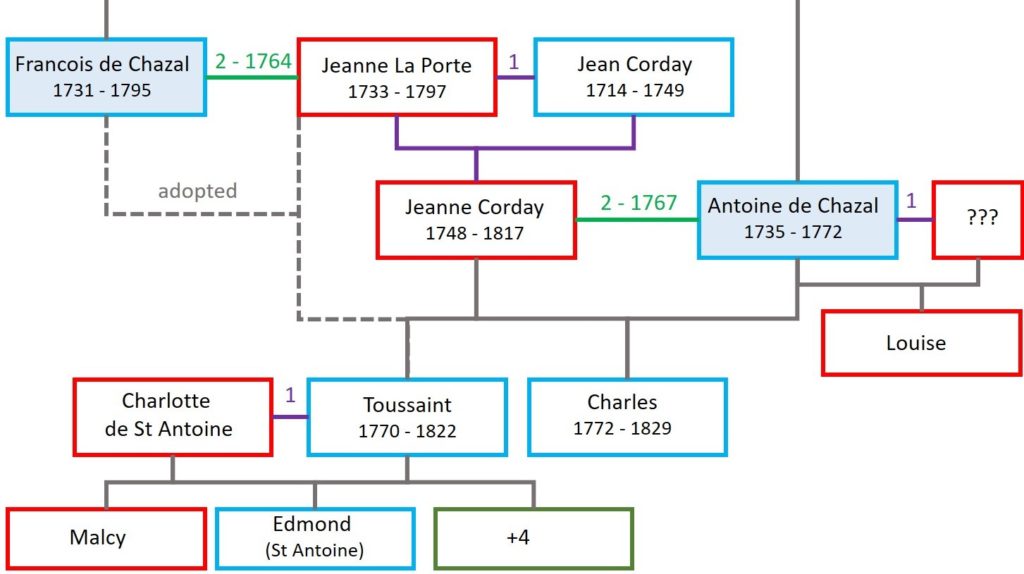
Francois de Chazal become Mayor of Pamplemousses in 1790 and his name is etched on the pillar at Pamplemousses gardens as he introduced many useful species of plant to Mauritius.
He also studies the works of Anton Mesmer and delves into magnetism and it’s healing properties despite strong objection from his older brother Pierre. He does however provide Pierre with a reliable way to cure gout through magnets although Pierre still thinks it is quackery.
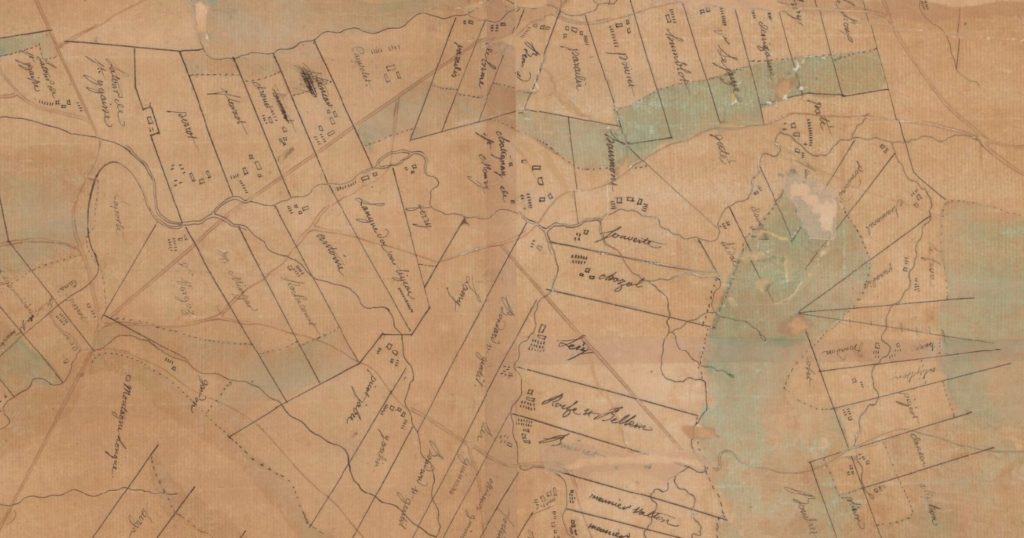
The estate of Belle Montagne is most likely very near to where the tower of Elmina (The Mine in Portuguese) still stands today. On the old hand drawn map of the mid 1700’s, you can see the Chazal land marked in between the rivers. I will let the explorers out there perhaps wonder why the name Elmina, although you can get a hint from our video on Notre Dame.
The video link below will take you to the section on Elmina sugar mill.
Francois de Chazal has a room of curiosities at his house. As a man of the Age of Enlightenment, he was interested in the classification and documentation of this natural history more than the mere collecting of it. What happens to this cabinet (room) is a mystery as after Francois death, his brother Pierre enquires of it’s whereabouts from his adopted son Toussaint but receives no answer.
It appears that Toussaint didn’t care much for natural history as his daughter Malcy (the one who drew the extinct hibiscus flower) used to join him hunting in 1815 where he wanted to shoot Dutch pigeons (the at the time very rare Mauritian Blue pigeon).
Matthew Flinders, who is a scientist and will appear quite a few times in our stories of Mauritius, is the neighbour of the house form 1805-1810 and does not mention the room of curiosities anywhere in his writings. He does note in his diary many times of borrowing books from Pitot and useful items from the de Chazal estate such as a compass.
Flinders mentions Toussaint over 200 times mostly in reference to outdoor activities, painting and social visits, nothing of a scientific nature. Pitot is the neighbour of Toussaint, so perhaps he sold his adopted father / uncle’s collection to him?
We will never know for sure what became of all of Francois books and collections.
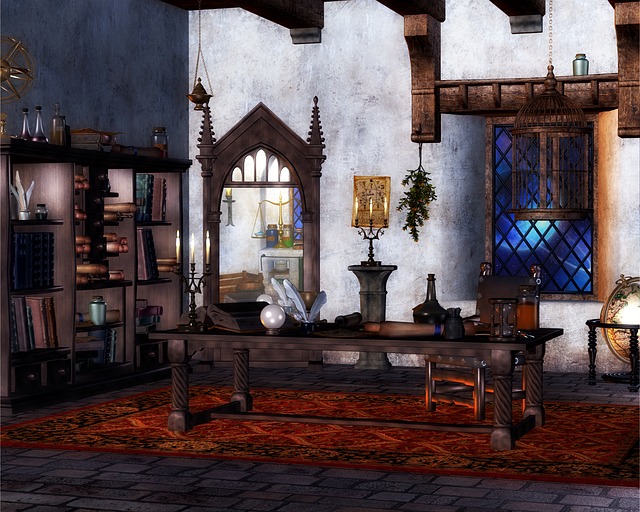
Sigismund Bacstrom, a naval surgeon, does write about a library collection of over 1000 books at the house of Francois de Chazal. However, Bacstrom claims that Francois is 96 years old. In 1794, Francois was only 63 years old although he himself admitted to not looking in his best health.
Bacstrom is a bit of a tragic character and this needs explaining as he will appear again later in our story. As a ship’s surgeon Bacstrom did quite well. However around 1973, his British ship sailing for Mauritius, is subject to a mutiny on board and captured at Port Louis by the French as a prize of war. Six months later, he is sailing again but this time in an American ship bound for New York. His ship is captured by the British and seized as a prize of war.
He eventually makes it back home to England but is penniless and cannot find any supporters for his writings or drawings. Bacstrom is clearly gifted at surgery and is a skilled orator but his writings and paintings are not up to the same level. He needs a new plan.
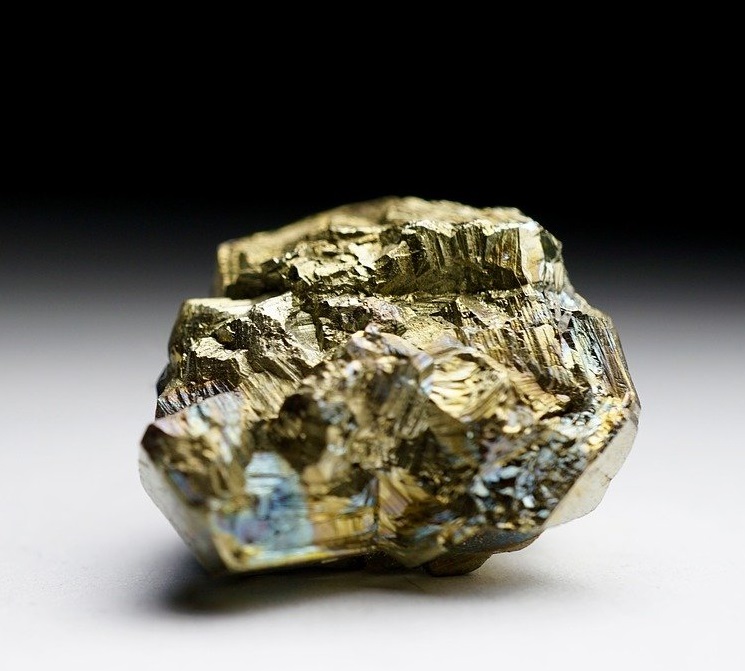
Is Francois de Chazal really an immortal? Wait, what now? There is a theory based on the writings of Arthur Edward Waite that Francois is actually a skilled alchemist who has discovered the Philosophers Stone and who is also a tenth degree Rosicrucian, trained and initiated by the legendary Count of St Germain himself.
If this all sound a little like a popular book featuring wizards, I agree. However, there seem to be documents of proof produced by Waite and later by the French author Rene Garnier.
Bacstrom writes that he has actually witnessed Francois converting many different metals into precious gold. He has been training with de Chazal and writing down what is required to perform alchemy.
Apparently Francois initiates Bacstrom into the Rosicrucian society in 1794 (when Bacstrom is in Mauritius for 6 months) and there is a signed document to prove such. The problem is, the original document was destroyed in a fire but we have copies, made by hand in those days, to fall back on.
There are a few inconsistencies though, de Chazal’s name is signed as du Chazal and written as Louis and, the entire document is written in perfect 18th century English. Never fear as it is quite obvious that names are changed to protect the initiates identities, the du Chazal must have simply been a transfer error from the copier and written in English, of course Francois spoke fluent English, he was a well studied man.
Many books have been written on the premise that this document is authentic and Francois (or Louis, wink wink) de Chazal is a great Rosicrucian. If you read the Wikipedia page for Sigismund Bacstrom, it is all there as fact.
I am not well studied on this but based on my readings, am willing to put forward my two plausible options. Firstly, there was a Rosicrucian alchemist living in Mauritius who met and initiated Bacstrom. This man was around 96 as described and learnt the secrets back in 1740, Bacstrom was insistent on this date, from the Count of St Germain (at the time our François is only 9 years old). Who was this man and why did he pretend to be Louis du Chazal? What became of his fortune in gold?
My second option is that Bacstrom had heard of de Chazal during his 6 month stay in Mauritius but had not actually met the man or visited his estate. When he returned to England and couldn’t find a way to make money, he concocted this fabulous tale and forged his membership papers into a secret society.
Or of course, who knows? Perhaps Francois was much older than he appeared thanks to his Philosophers Stone and continued to live on as Edmond and then possibly Malcolm de Chazal. You can decide what you want to believe.
If you have enjoyed this blog about the mysteries of Francois de Chazal in Notre Dame, perhaps consider buying me a coffee using the link below.
Pingback: The village of Notre Dame, Mauritius – Bryan discovers world